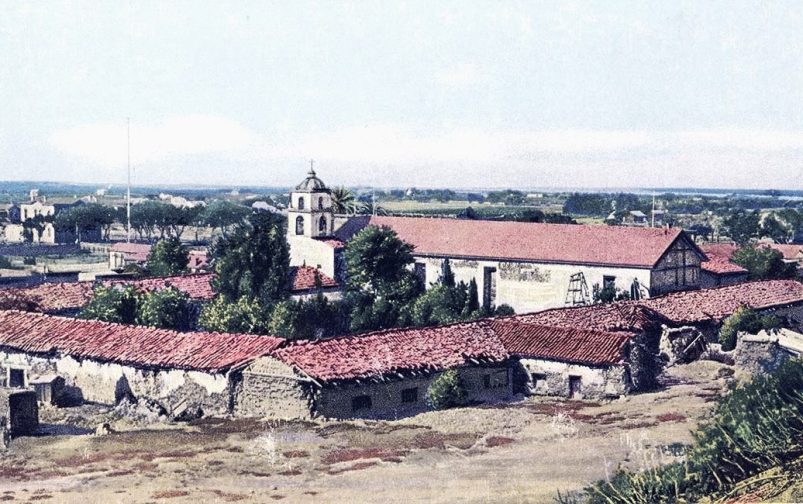On Easter Sunday, March 31, 1782, Father Serra founded Mission San Buenaventura, the last California mission he established in person. The Spanish King had changed his position again, claiming that a few white settlers were of greater value than any number of Indian converts. Father Serra argued that the money funding the missions came from the privately collected Pious Fund. The King then replied that he administered the Pious Fund by law. New missions would be churches only, without usual industries supported by Indian labor. Serra ignored the new rules at Ventura, which temporarily halted further expansion.
Even so, under the old rules, San Buenaventura quickly became prosperous. A seven-mile-long reservoir and aqueduct system supplied fields stretching to the very shore of the blue Pacific, growing, according to one record: “astounding varieties of agricultural products”.

Of course, with Secularization, those rules ignored by Father Serra were enforced. By 1845, all the Catholic Church’s lands and even the Pious Fund had been confiscated, although most of the properties were eventually returned. In 1887, with the arrival of the railroad, the sleepy village beside the mission suddenly blossomed.
Now located on the main street of Ventura and hemmed in by the business community, it might be difficult to imagine that, thanks to the aqueduct, the old church and mission were once surrounded by orchards, vineyards, and grain fields that made it a garden spot among the missions. Two huge Norfolk Island pines in the garden between the church and the little museum are 100 years old, reputedly planted by a sailing captain who hoped to grow a forest for use as masts. In the museum are two old wooden bells, the only ones of this type known in California.
